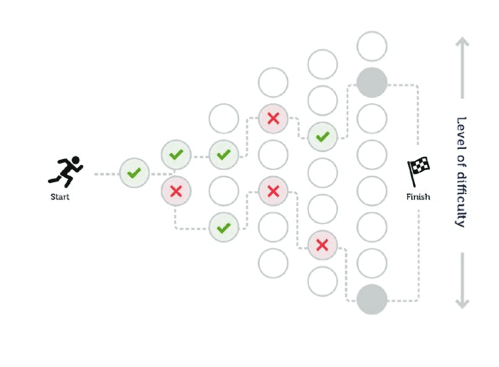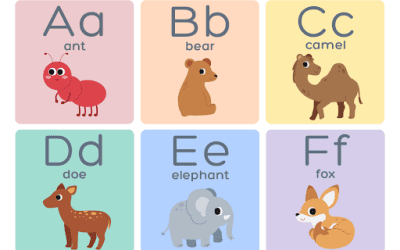With computer adaptive testing, an item creator builds a large pool of questions with levels of difficulty assigned to each one. As students answer questions, future questions are selected using an algorithm designed to adjust the level of difficulty according to each student’s ability. At a basic level, answering questions correctly leads to more difficult questions, while answering questions incorrectly leads to less difficult questions.
Benefits of Adaptive Assessments
Adaptive assessments are designed to challenge students. High-achieving students who take a test designed around an average are not challenged by questions below their individual achievement abilities. Likewise, lower-achieving students are not served by questions that are so far above their current abilities that they’re left guessing the answers instead of applying what they know. Adaptive testing addresses these issues by adjusting to the individual proficiencies of students. High-achieving students can be challenged by more difficult questions, while students who are slightly below the average are not overwhelmed but rather encouraged to continue moving forward by answering questions at or slightly above their current achievement level. This motivates students to reach slightly beyond their comfort zone—no matter where that zone might be—and prevents students from getting discouraged.
On a more practical level, adaptive testing is also more efficient than non-adaptive. High-achieving students can quickly move through lower-difficulty levels and on to the questions that more accurately reflect their current achievement levels. Students who are struggling will not waste time on questions that are ultimately beyond their current reach. Instead, every student spends time answering questions centered around their current ability level, rather than questions that do not provide them with a realistic challenge or the instructor with a meaningful unit of measure. 
Adaptive assessments are also beneficial to teachers. While a test designed around an average can tell an instructor what a high- achieving student does know, it fails to tell the instructor what the student does not know.
Therefore, instructors are left with little guidance on how to challenge such students and continue instruction in a progressive way. Similarly, with adaptive testing, a teacher can get a more accurate picture of where lower- achieving students need help. Some students with lower overall scores may, in fact, have mastered certain areas of knowledge. This information helps teachers target further instruction. Adaptive models also provide teachers with a specific point where students have reached the boundary of their current achievement level; this knowledge helps teachers and school officials understand what is left for students to accomplish and helps them set realistic and concrete goals for future instruction.
On Thursday, we will continue the discussion on technology enhanced assessment with some practical examples.




